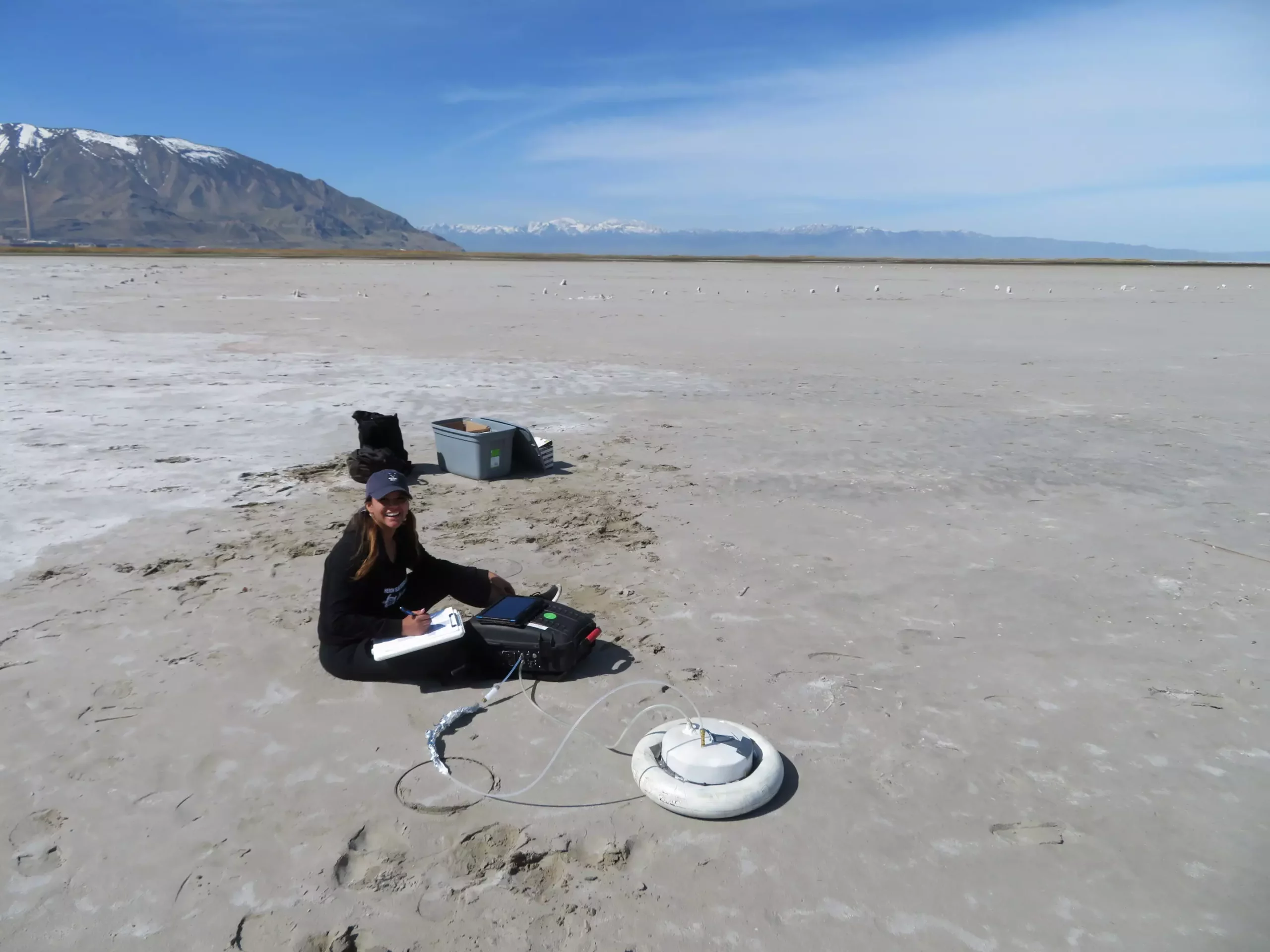Recent research conducted by the Royal Ontario Museum reveals a startling reality: the desiccation of the Great Salt Lake in Utah is not merely an environmental nuisance; it is emerging as a significant contributor to anthropogenic greenhouse gas emissions. This phenomenon underscores a critical piece of the climate change puzzle that has largely gone unnoticed—drying lake beds potentially release substantial amounts of carbon dioxide and methane into our atmosphere. An astonishing 4.1 million tons of greenhouse gases were emitted from the lake bed in 2020 alone, primarily as carbon dioxide. This revelation is essential for understanding the broader implications of climate change and the urgent need for more aggressive climate action.
The Methodology Behind the Findings
The findings stem from meticulous field research led by Soren Brothers, the Allan and Helaine Shiff Curator of Climate Change at the ROM. During the course of their study from April to November 2020, researchers utilized a portable greenhouse gas analyzer to assess emissions from the vast expanse of the Great Salt Lake bed. Seven distinct sites were carefully monitored, allowing scientists to capture data on spatial variability across the largest saline lake in the Western Hemisphere. This level of precision in measurement is commendable; it paints a more comprehensive picture of how environmental conditions can drastically alter methane and carbon dioxide emission rates.
The analytical method involved measuring emissions at intervals and contextualizing these findings with pre-existing aquatic emissions data. This innovative approach provided a more nuanced understanding of how the lake’s changing environmental status impacts greenhouse gas levels. Yet, while the methodology was rigorous, one must ponder whether similar studies are being conducted in other drying lake beds across the globe. If not, we are missing the opportunity to understand a potentially critical global trend.
The Human Impact on Great Salt Lake
It is essential to explore the human-driven factors contributing to the lake’s desiccation. Agriculture, industry, and municipal water consumption have drastically reduced the inflow of freshwater that sustains the Great Salt Lake. This unsustainable use of resources highlights a fundamental conflict between human development and ecological preservation. In a world increasingly impacted by climate extremes, it raises the question: How much longer can we ignore the environmental consequences of our consumption patterns? The relationship between human activity and environmental degradation must be addressed with unprecedented urgency.
As many prominent ecosystems face severe declines due to similar pressures, the lessons learned from the Great Salt Lake can serve as a harbinger for other globally significant water bodies which are similarly threatened. This essential dialogue must extend beyond Utah and echo through legislative chambers and global climate conferences where water management has historically received insufficient attention.
The Broader Implications for Climate Change Mitigation
The research suggests that as the Great Salt Lake continues to decrease in volume, the resulting emissions may catalyze feedback loops that exacerbate climate change. Dried lake beds emitting greenhouse gases represent a new category of climate contributors—one that had not been sufficiently scrutinized until now. This prompts immediate questions for policymakers and climate strategists: Should we expand our focus to include drying water bodies in climate models? How can we incorporate these findings into real-world mitigation strategies?
Given that methane is over 25 times more effective at trapping heat in the atmosphere than carbon dioxide, the urgency for intervention escalates. The cumulative impact of these emissions, reflected in “carbon dioxide equivalents,” represents a concerning addition to Utah’s anthropogenic greenhouse gas output, constituting a 7% increase. As these effects compound, ignoring drying lake beds effectively undermines our climate action initiatives.
Addressing the Problem Head-On
The pathway to effective climate action must include comprehensive research into the impact of drying lake beds and other neglected ecosystems. The Great Salt Lake serves as a critical reminder that the climate crisis transcends the conventional sources of greenhouse gases predominantly discussed—namely, fossil fuels and deforestation. Recognizing and incorporating the emissions from drying lakes into our climate models is not just a scientific necessity but a moral imperative for humanity.
The drying of the Great Salt Lake is a multifaceted threat that extends beyond environmental degradation. It raises profound questions about our rights to natural resources, our ecological responsibilities, and our moral obligation to future generations. Additionally, the research opens avenues for innovative water management strategies that could help mitigate these emerging threats—an opportunity we must not shy away from.
This ongoing dilemma not only demands scientific inquiry but also societal engagement; solutions must be comprehensive and inclusive, bringing together diverse stakeholders to ensure we are addressing climate change from all angles. As we tread further into uncharted climate territory, ignoring these silent threats poses a risk not only to our environment but to our very existence.

